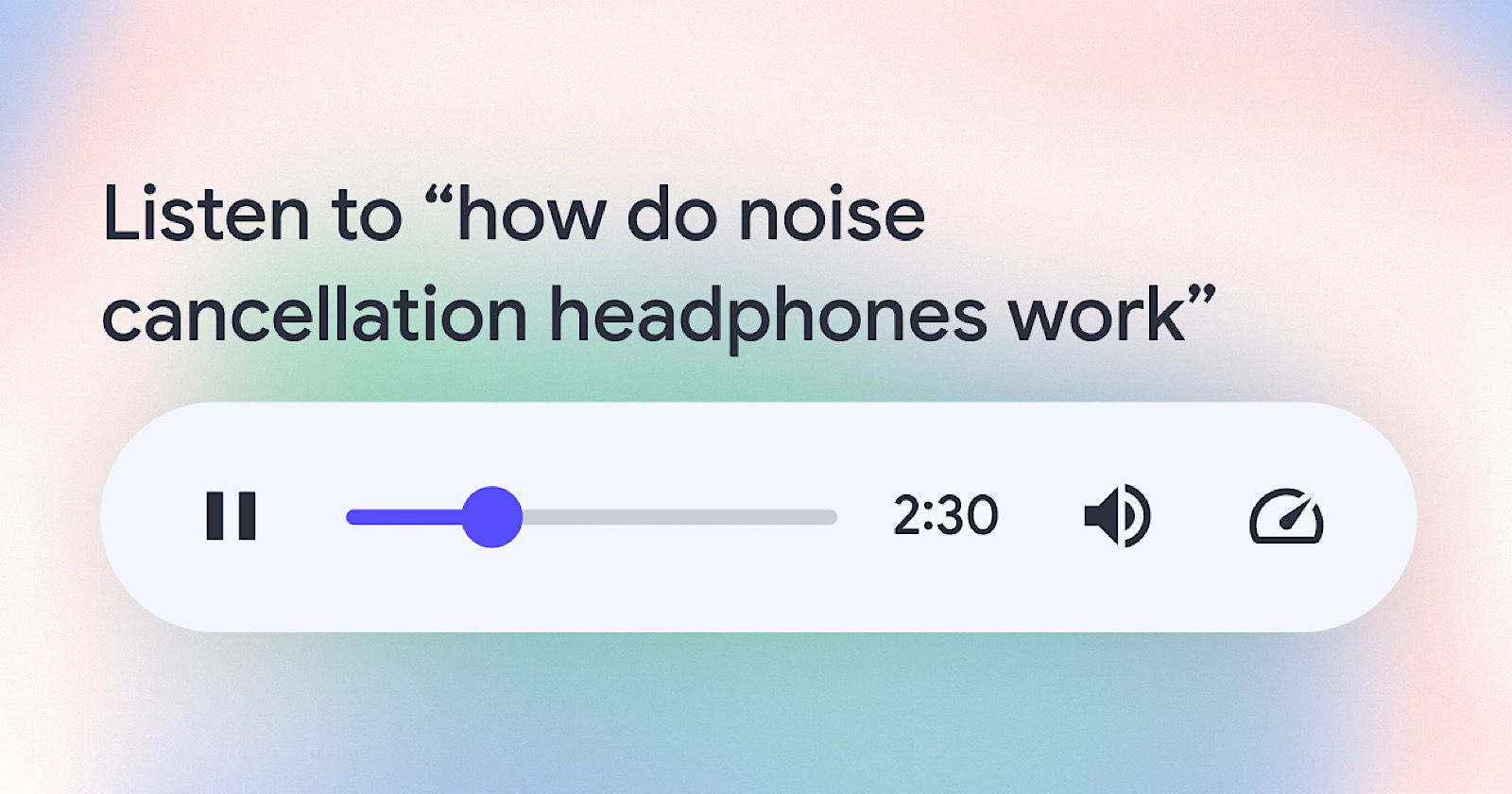Getting Cited in LLMs: A Guide to LLM Seeding
Have you recently noticed AI platforms like ChatGPT or Gemini pulling answers from websites but not always linking back? Don’t think of it as an unfortunate glitch, but a big shift in how these tools present information. Large language...

Have you recently noticed AI platforms like ChatGPT or Gemini pulling answers from websites but not always linking back?
Don’t think of it as an unfortunate glitch, but a big shift in how these tools present information.
Large language models (LLMs) change how users see your content. Instead of relying on Google’s ten blue links, people get their answers straight from AI tools in an easy-to-read summary that’s often been condensed and (unfortunately) without any clicks to your site.
If these tools don’t reference your content, you’re missing out on a growing share of visibility. That’s where LLM seeding comes in.
LLM seeding involves publishing content in places and formats that LLMs are more likely to crawl, understand, and cite. It’s not a traditional SEO strategy or “prompt engineering.” Instead, you’ll use this strategy to get your content to appear in AI-generated answers, even if no one clicks.
We’ll cover what LLM seeding is, how it works, and the steps you can take to start showing up in AI responses before your competitors get there first.
Key Takeaways
LLM seeding involves publishing content where large language models are most likely to access, summarize, and cite. Unlike SEO, you’re not optimizing for clicks. Instead, you’re working toward citations and visibility in AI responses. Formats like listicles, FAQs, comparison tables, and authentic reviews increase your chances of being cited. Placement matters. Publish on third-party platforms, industry sites, forums, and review hubs. Track results and monitor brand mentions in AI tools, referral traffic from citations, and branded search growth from unlinked citations across the web.What is LLM Seeding?
LLM seeding is publishing content in formats and locations that LLMs like ChatGPT, Gemini, and Perplexity can access, understand, and cite.
Instead of trying to rank #1 in Google search results, you want to be the source behind AI-generated answers your audience sees. The goal is to show up in summaries, recommendations, or citations without needing a click. The fundamentals overlap with SEO best practices, but the platform you’re optimizing for has changed.
Let’s say you run a productivity software company. Your content marketing team writes a detailed comparison post about the “Best Project Management Tools for Remote Teams.” A month later, someone asks ChatGPT that exact question, and your brand name shows up in the response, even though you don’t rank on page one in Google.
How did the LLM find your information? Here’s what it looks like behind the scenes.
LLMs have been trained on massive datasets pulled from the public web, including blogs, forums, news sites, social platforms, and more. Some also use retrieval systems (like Bing or Google Search) to pull in fresh information. When someone asks a question, the model generates a response based on what it has learned and in some cases, what it retrieves in real time.
Well-structured content, clearly written, and hosted in the right places, is more likely to be referenced in the response: an LLM citation. It’s a huge shift because instead of optimizing almost exclusively for Google’s algorithm, you’re now engineering content for AI-visibility and citations.

Asking ChatGPT for a list of the best laptop backpacks provides several citations and options.
LLM Seeding vs. Traditional SEO
Traditional SEO focuses on ranking high on Google to earn clicks. You optimize for keywords, build backlinks, and improve page speed to attract traffic to your site.
LLM seeding flips that on its head.
You don’t chase rankings. You build content for LLMs to reference, even if your page never breaks into the top 10. The focus shifts from traffic to trust signals: clear formatting, semantic structure, and authoritative insights. You provide unique insights and publish in places AI models scan frequently, like Reddit, Medium, or niche blogs, which increases your chances of being surfaced in AI results.
SEO asks, “How do I get more people to click to my website?”
LLM seeding asks, “How do I become the answer, even if there’s no click?”
The thing is, it’s not an either/or proposition. You still want to do both. But you’re invisible to a constantly growing audience if you’re not thinking about how AI tools interpret and cite your content.
Benefits of LLM Seeding
LLM seeding goes beyond vanity metrics to the visibility that actually sticks, even when clicks don’t happen. It can be a real game-changer because it lets you do the following:
Stay visible in AI search: As tools like ChatGPT, Gemini, and Perplexity replace traditional searches for quick answers, content needs to appear inside those responses, not just in the search results below them. Earn brand mentions without needing the click: LLMs don’t always link back, but mentions can still be wins. They keep your brand top of mind and build familiarity, and they nudge users to search for you by name later. Build authority at scale: When LLMs start citing your brand alongside major players, it’s like being quoted in the New York Times of AI. You earn topical authority and credibility by association. Bypass the ranking fight: You don’t need to beat everyone to position one. You just need the best answer. From what we know right now, good focus areas are building around clarity, structure and trust signals. Get ahead while others sleep on it: LLM seeding is still an “under-the-radar” strategy. Right now, you’ve got a first-mover advantage. Don’t wait until your competitors are already showing up in AI responses.Best Practices For LLM Seeding
If you want LLMs to surface and cite your content, you need to make it easy to find, read, and worth referencing. Here’s how to do that:
Create “Best of Listicles”
LLMs prioritize ranking-style articles and listicles, especially when they match user intent, such as “best tools for freelancers” or “top CRM platforms for startups.” Adding transparent criteria boosts trust.

Use Semantic Chunking
Semantic chunking breaks your content into clear, focused sections that use subheadings, bullet points, and short paragraphs to make it easier for people to read. This structure also helps LLMs understand and accurately extract details. If you’re having trouble thinking about where to start, think about FAQs, summary boxes, and consistent formatting throughout your content.
Write First-Hand Product Reviews
LLMs tend to favor authentic, detailed reviews that include pros, cons, and personal takeaways. Explain your testing process or experience to build credibility. Websites like Tom’s Guide and Wirecutter do an excellent job of this.

Wirecutter’s table of contents breaks down why they choose the items they choose and why you, the reader, should trust them.
Add Comparison Tables
Side-by-side product or service comparisons (especially Brand A vs. Brand B) are gold to LLMs. You’re more likely to be highlighted if you include verdicts like “Best for Enterprise” or “Best Budget Pick.” An example of a brand that does comparison tables particularly well is Nerdwallet.

Include FAQ Sections
Format your FAQs with the question as a subheading and a direct, short answer underneath. LLMs are trained on large amounts of Q&A-style text, so this structure makes it easier for them to parse and reuse your content. FAQ schema is also fundamental to placement in zero-click search elements like featured snippets. The structured format makes your content easier for AI systems to parse and reference.

Almost every article we publish on our site features FAQs that have been properly formatted.
Offer Original Opinions
Hot takes, predictions, or contrarian views can stand out in LLM answers, especially when they’re presented clearly and backed by credible expertise. Structure them clearly and provide obvious takeaways.
Demonstrate Authority
Use author bios, cite sources, and speak from experience. LLMs use the cues to gauge trust and credibility. If you’ve been focusing on meeting E-E-A-T guidelines, much of your content will already have this baked in.
Layer in Multimedia
While ChatGPT may not show users photos inside the chat window, screenshots, graphs, and visuals with descriptive captions and alt text help LLMs (and users who do click through) better understand context. It also breaks up walls of text.
Build Useful Tools
Free calculators, checklists, and templates are highly shareable and are easy for AI systems to parse and extract. Make sure the title and description explain each item’s value upfront.
It’s telling that many of the best practices for traditional SEO often work well for LLM seeding. At their core, both priorities involve giving people the best possible answers to their questions in a highly readable and simple way to digest. In fact, creating content that works well for all avenues is a cornerstone of search everywhere optimization.
Ideal Platforms for LLM Seeding Placement
Publishing on your site isn’t enough to excel with LLM seeding. AI models pull from a wide mix of sources across the web. The more places your content shows up, the more likely it is to influence or be cited in AI-generated answers.
1. Third-Party Platforms
LLMs tend to surface structured, public content hubs. Medium, Substack, and LinkedIn articles get crawled often and carry extra weight because of their clean formatting and tied-to-real-author profiles. These sites publish large volumes of content and are widely trusted, so your content benefits from their visibility and is more likely to be surfaced in AI-generated answers.

2. Industry Publications & Guest Posts
Contributing to trusted outlets, such as trade blogs, marketing publications, and niche news sites, offers your brand credibility and increases the odds of your content being surfaced or cited in AI-generated answers.
3. Expert Quotations
Offering quotes to journalists or bloggers through services like HARO or Featured can land you in articles LLMs surface and cite repeatedly.
4. Product Roundups and Comparison Sites
Sites like G2, Capterra, or niche review sites are LLM goldmines. Get your customers to leave detailed reviews and provide quotable explanations about why your product or service stands out.

5. Forums and Communities
Reddit and Quora are two of the most frequently surfaced sources in AI answers. Niche forums and communities (such as AVS Forum or Contractor Talk) also carry weight because they’re packed with authentic, experience-driven insights. Consider creating a public-facing profile to answer questions about your product or service. In addition, they’re excellent spaces to source user-generated content (UGC) that can provide additional context and support.
6. Editorial Microsites
Small, research-driven microsites can carry more authority than heavily branded pages. Because they are often well-structured, focused, and treated as independent resources, they are more likely to be picked up by LLMs when generating answers.
7. Social Media
Platforms like LinkedIn, YouTube, and even Reddit threads can double as searchable databases for LLMs. Use structured language, captions, and context in every post.

Here’s the bottom line: LLM seeding works best when your content is everywhere AI looks, not just on your blog.
How To Track LLM Seeding
Tracking LLM seeding is different from tracking SEO performance. You won’t always see clicks or referral traffic, but you can measure impact if you know where to look. These KPIs matter the most:
1. Brand Mentions in AI Tools
Manual testing: Try running audience-style prompts in ChatGPT, Gemini, Claude, and Perplexity in incognito mode so past queries don’t bias results. As a note here, results can vary from instance to instance, so test multiple times to see consistent patterns.

We’re in pretty good company among the top five resources.
Tracking tools: Perplexity Pro lets you see citation sources, while ChatGPT Advanced Data Analysis can sometimes surface cited domains. Even enterprise tools like Semrush AIO have started to track brand mentions across AI models. There are also dedicated tools like Profound that specifically focus on AI visibility.
2. Referral Traffic Growth
Using tools like GA4 can help you determine LLM seeding’s effectiveness, but not via traditional metrics.

With GA4, you’ll want to navigate through Reports > Acquisition > Traffic Acquisition and then filter for your chosen form of traffic. Be sure to review the source/medium dimension for more details about specific LLM platforms. Referral traffic may come from LLMs if they include a clickable link to your website. By contrast, brand mentions without links are more likely to drive users to search for you after using an LLM, which GA4 usually classifies under organic search.
This isn’t super-likely by comparison. Since this is less common, it’s best to look at referral traffic alongside LLM visibility metrics for the full picture of performance.
3. Unlinked Mentions
You have several options for seeking out unlinked mentions. Set up Google Alerts for brand name or product mentions; that can help you surface when your brand is mentioned in the news or other platforms. For example, Semrush’s Brand Monitoring tool lets you look for citations without backlinks.

Semrush touts its brand monitoring tool as one of the best in the business.
4. Overall LLM Visibility
No matter which tools you use, building a log to track your monthly tests across AI platforms can provide insights. Document the tool(s) used, prompt asked, and the exact phrasing of the mention. You’ll also want to track your brand sentiment; is your brand being talked about in a positive, neutral, or negative light?
Companies like Serpstat, Similarweb, and Profound have begun to offer AI visibility reporting, and those options will mature fast.
There’s currently no silver bullet to track LLM seeding comprehensively. It’s partly manual work, partly analytics, and partly new tools still in beta. You can create an AI Visibility Dashboard that combines GA4, brand monitoring, and a spreadsheet of monthly AI prompts to get a head start.
FAQs
What is LLM seeding?
LLM seeding is publishing content in formats and locations that large language models (LLMs) are more likely to surface and cite. Instead of optimizing only for search rankings, you’re optimizing for visibility in AI-generated answers.
What are LLM citations?
An LLM citation happens when an AI platform like ChatGPT, Gemini, or Perplexity references your content with a source link in its response.
What is an LLM mention?
An LLM mention is when an AI platform references your content but doesn’t provide a clickable source link.
How do I know if my brand is being cited?
Run audience-style prompts in AI tools (like “best project management software for startups”) and see if your brand shows up. Also, track referral traffic trends in GA4.
Conclusion
Search looks different today because users no longer rely exclusively on Google. Your audience asks questions in ChatGPT, Gemini, and other AI tools. They’re now the ones who decide which brands get mentioned.
LLM seeding matters. You can stay visible even when clicks don’t come and earn credibility by showing up in AI responses. This futureproofs your marketing against zero-click trends and keeps you agile and top of mind.
To win this new landscape, start small: publish in formats LLMs love like listicles, FAQs, and comparisons), seed content across third-party platforms, and track whether your brand shows up in AI outputs.
The companies that adapt today will own the conversation tomorrow.

 BigThink
BigThink 































